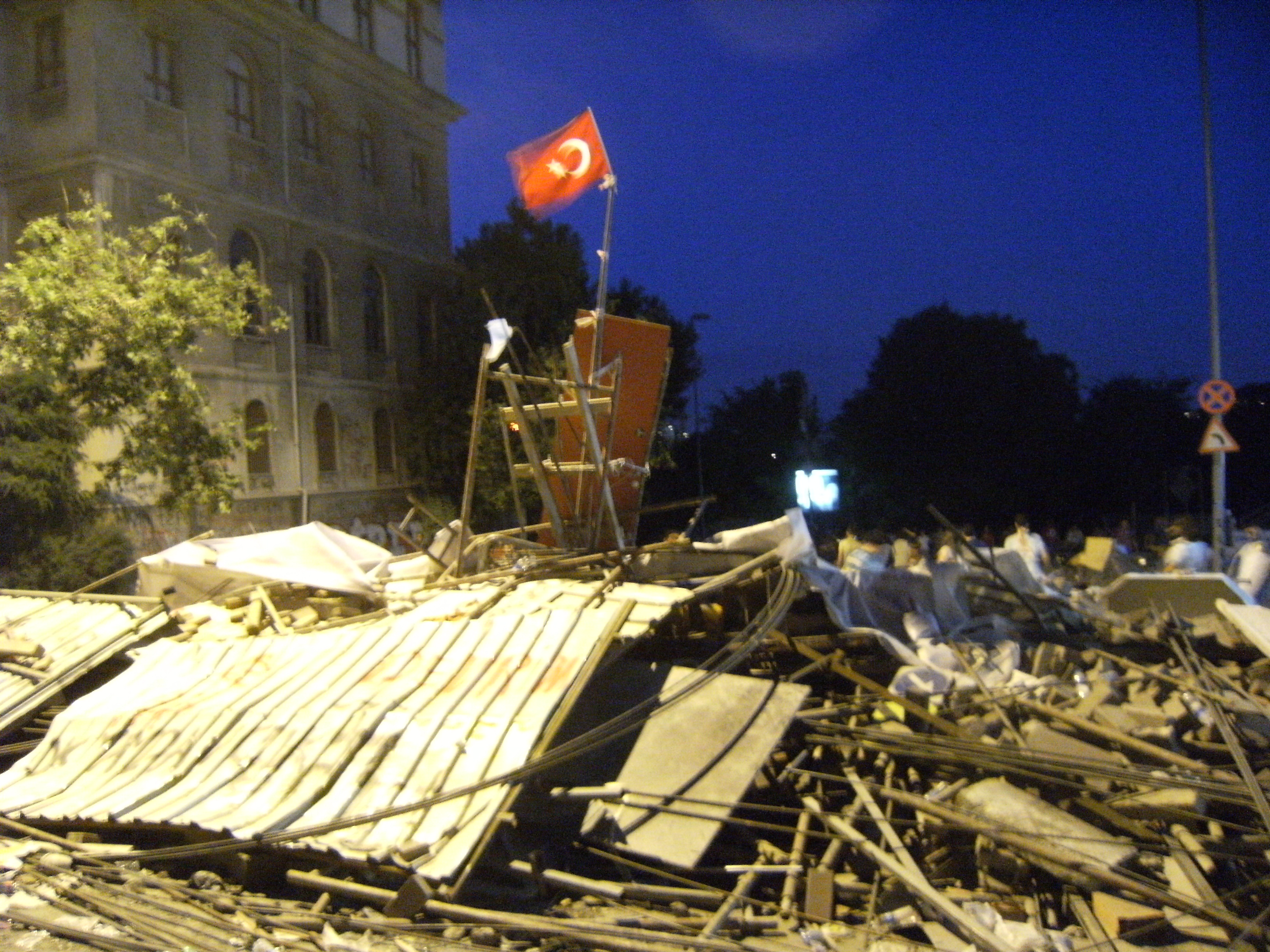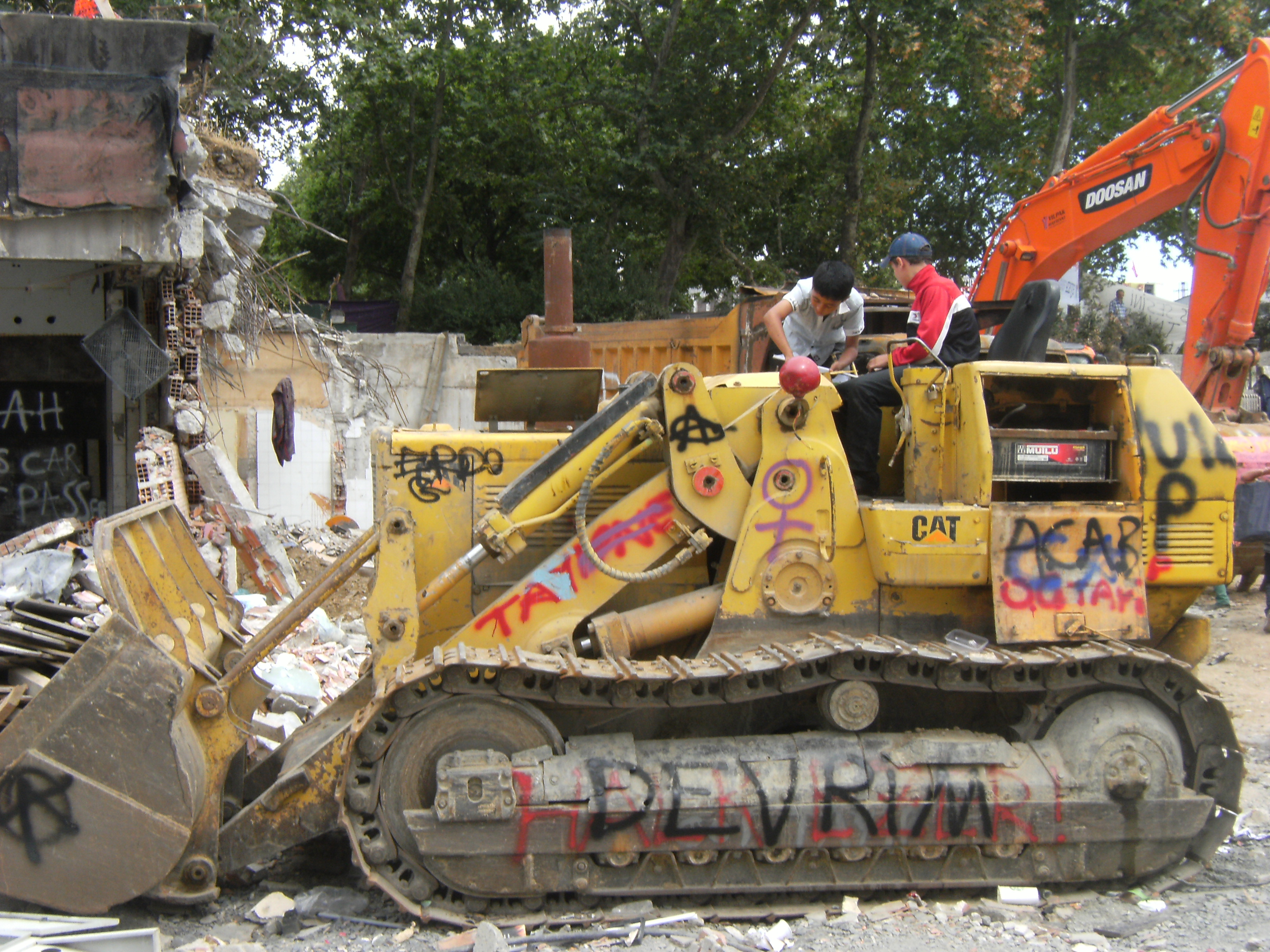If you listened to Episode 34 of the Thinking Poker Podcast, then you know that Gareth Chantler was in Istanbul during the recent protests in Taksim Square. The following is a guest post by Gareth about the experience. He didn’t provide any specific context for the photos he sent, so I inserted them somewhat arbitrarily into the text. Their placement isn’t necessarily indicative of when they were taken or what is happening in the them.
Saturday, June 1st
“I’m paying for that tear gas! I buy it with my tax money,” a protestor screams in Turkish.
Another, wearing jeans and a scarf over his nose and mouth, picks up the superheated cylinder and hurls it back in the police’s direction.
I’m disoriented – coughing and crying. Emre runs into a Macdonald’s. They are taking people indiscriminately. I escape up the alley beside it.
We talk by cell phone five minutes later. He’s fine, I’m fine. I tell him to be safe; he will protest deep into the night.
It was ten in the morning when we first saw a huge mass of protestors marching up Istiklal Avenue, mostly young men age eighteen to twenty-four. An armoured car with mounted water cannon is in pursuit.
We take to a side street. Protestors scurry further up the alley, out of sight.
“Don’t run,” Emre warns.
Fleeing would make us a target for the riot police rounding the corner. They don’t fire gas at us, but canisters are launched further down Istiklal. Tourists are very close to the impact.
The protestors swarm from every tributary. The police, and the hose, open fire. Again we are relegated to fleeing, lying in wait.
The din seems unbroken for ten minutes. When it finally stops, we wander back into the street. Amateur photographers record while some pedestrians naively resume their activities. Shattered glass lines the street.
The water cannon and its riot police retinue decide to fall back; catching us between them and Taksim Square. We scurry down another empty backstreet to avoid confrontation, slinking behind a cash machine. When the armoured car passed, the hose aims in our direction, but we’re shielded.
That’s when police decide to fire gas twenty meters behind us, erasing our escape route. The side street opposite gets equal treatment.
Forced back onto Istiklal, we make for the next block. But it is too late; the burning overcomes me out of nowhere. It would be twenty-five minutes before the symptoms subside.
“There was a lull in the afternoon when police were mingling with us at McDonald’s,” Emre recounts.
Before nightfall, with surging momentum, the protestors retake Taksim. The riot police fall back. They are pursued into neighbouring Beşiktaş, which houses Prime Minister Erdogan’s Istanbul offices (the seat of government is in Ankara). The spontaneous demonstrators celebrated in the square all night.
But in Beşiktaş, things get ugly. Rocks are thrown. The gas is more intense, different even, taking a toll on Emre. One barrage leaves him blacking out, suffocating.
“It felt like I was dying. I thought that was going to be it. I accepted it.”
Riot police surround a mob over ten thousand strong, bottlenecking them between an Ottoman palace and an army base. This corridor is typically reserved for Beşiktaş’ fervent soccer fans to march to their stadium on game days. Tear gas is deployed relentlessly. These were the most militant protestors and in the following week the area would remain a hotbed for the ardent and the extreme.
“No one stampeded. I was surprised no one did something stupid. Everyone recognized the threat of people being trampled. We huddled together and moved as a group, despite the gas, to safety.”
Monday
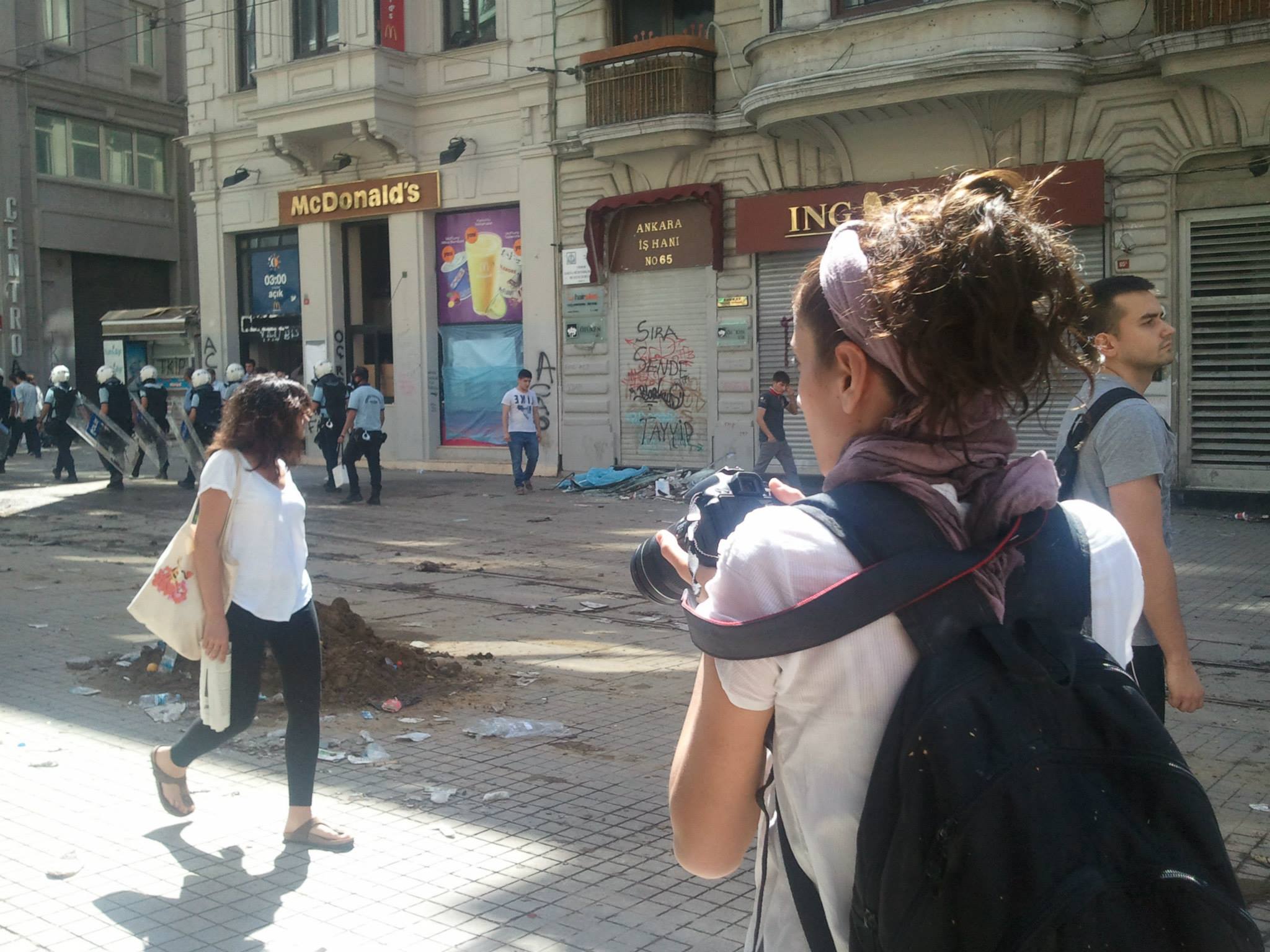
Emre returns from work after nine. He slides our glass door closed.
“There is tear gas in the district.”
Across Istanbul in residential Beylikdüzü, a concert rehearses every night, the entire district banging pots and pans as loud as possible. Copycat protests across the country continue, those in Ankara reporting intense clashes between police and demonstrators.
A few weeks ago the government passed legislation placing a variety of limitations on alcohol. One clause bars Emre’s department from promoting the wines they purchase for retail, another restricts alcohol consumption within one hundred meters of any school or mosque. Erdogan labels the national drink not the inebriating raki, but rather ayran, a dull yogurt beverage.
Tuesday
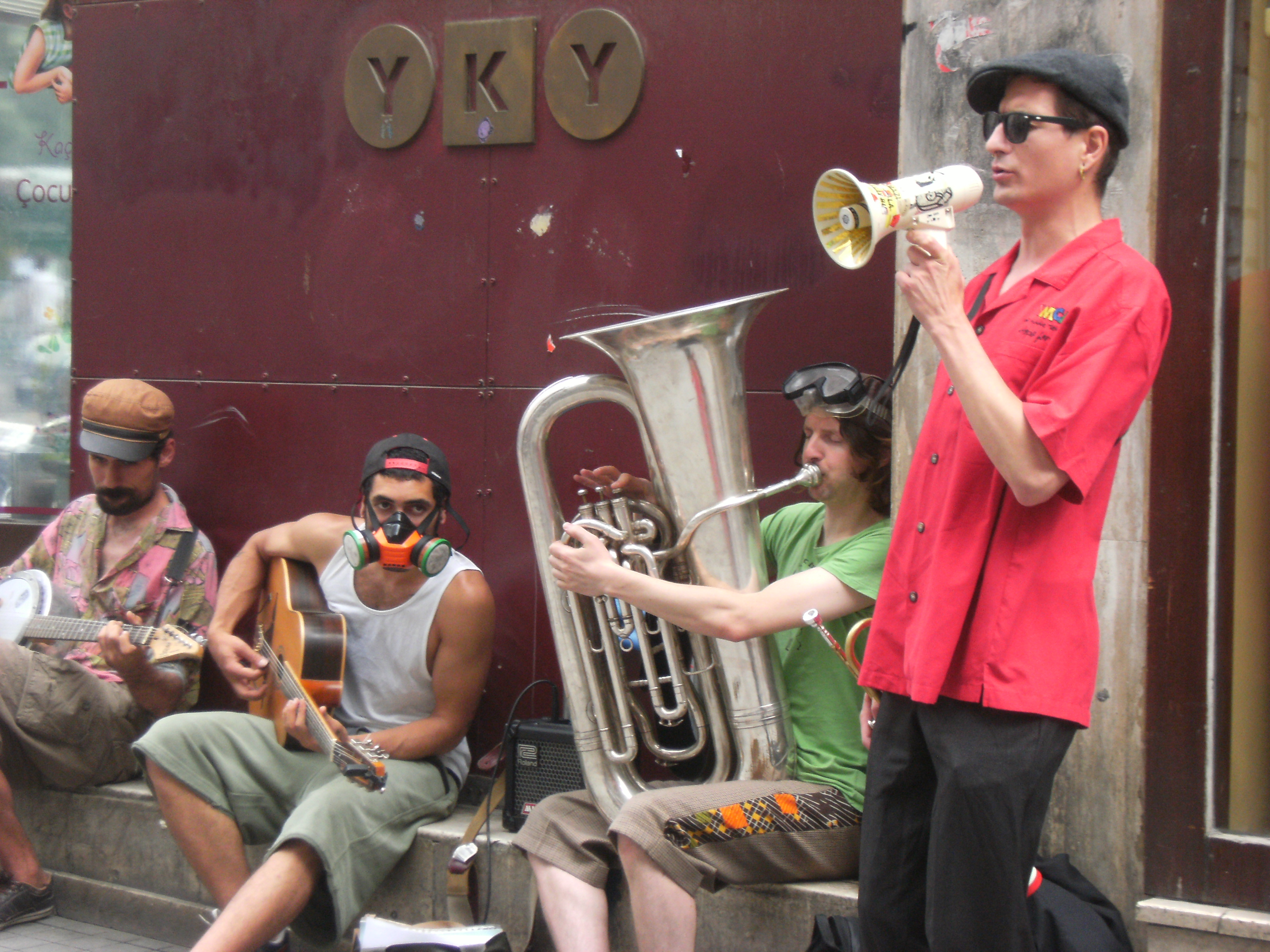
There is tension in Taksim today.
A clearly overtired youth is violently incensed with another protestor. He is soothed and held back by his compatriots. In Gezi Park, some have been here five days, and often it smells like it. Starbucks has been supportively patient, their Taksim storefront occupied – converted into an outlet for first aid and medical supplies.
A yogi holds class for twenty, switching between Turkish and English instruction seamlessly. Spectators applaud each pose. Doctors and nurses make rounds in the park to frequent adulation. There are gay and lesbian activists here. As is the original kernel of environmentalists, whose defense of (and forced expulsion from) the park inspired the initial large-scale rioting on Friday.
Chants spread quickly, “this is just the beginning,” a common theme. A troop begins a song bouncing on their knees, low to the ground. Slowly they rise, pulsing. They finish jumping, hundreds of people skipping over an invisible rope.
An older woman wearing a hijab claps in unison while being interviewed through a translator by a western journalist. The photographer gets a group shot of her with her three friends. But he oversteps going for an individual close-up, which she refuses, happily waving her finger as he ineffectually sweet talks her in the wrong language.
An entrepreneur spreads out ‘anonymous’ masks and swimming goggles on a rug. Suits pass through without being harassed. Erdogan’s stewardship over a decade of fantastic economic progress made him thoroughly re-electable. But for all the protestors, Turkey does not have to accept a creeping Islamist agenda to sustain economic progress.
The improvised barricades at Taksim’s entrances are detritus and rubble. The government has the force to crush the occupation, but western reporters are here now, and all cameras point to Taksim. Erdogan names twitter “the worst menace to society.”
Thursday
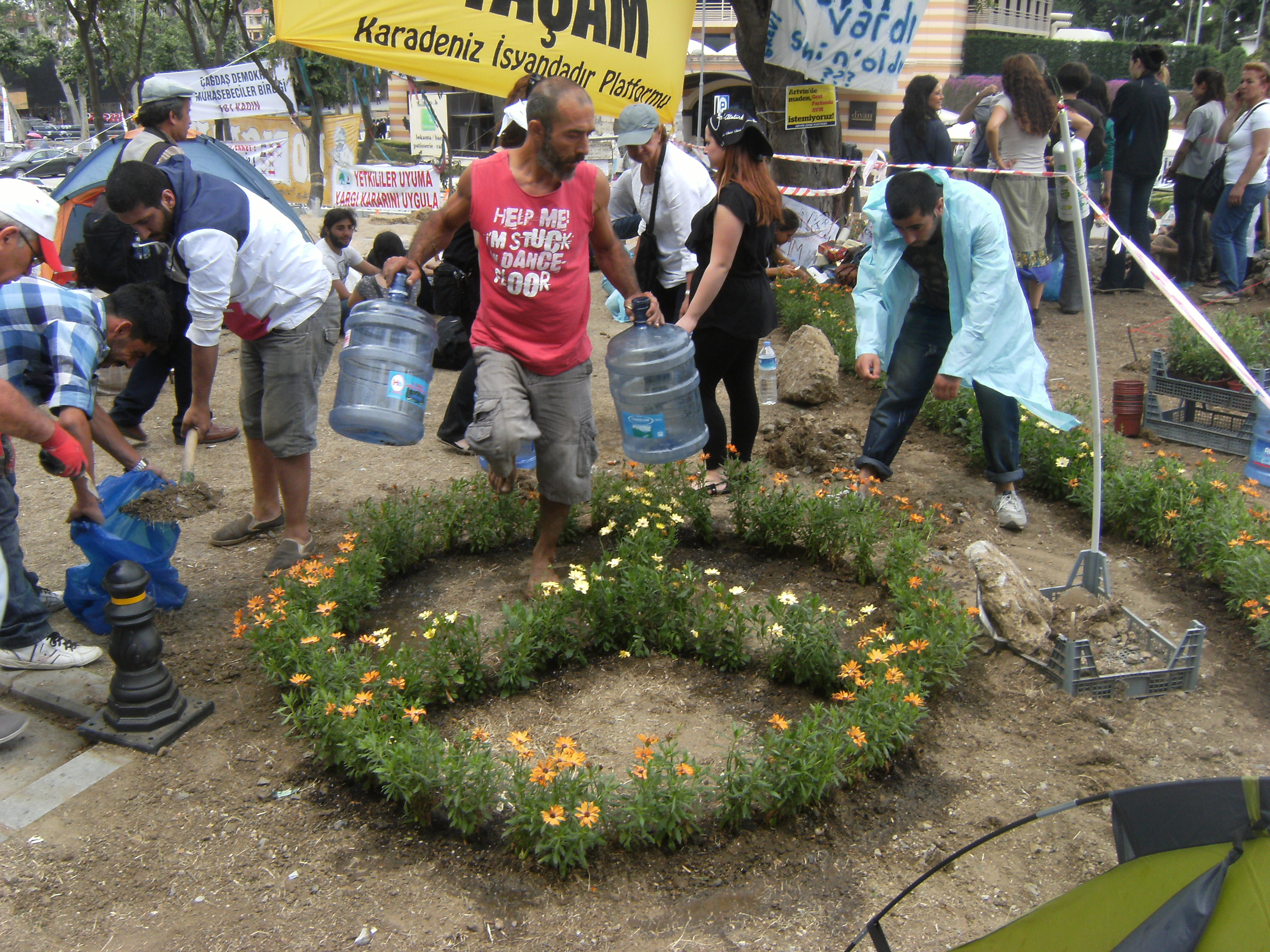
I read Stephen Kinzer’s Crescent and Star on the commute. He interviewed Erdogan shortly after the Prime Minster won office almost exactly ten years ago.
“My political views have always been in a state of constant evolution,” he is quoted at the time.
“That’s true, but over ten years he’s lost touch,” Emre asserts.
Kinzer’s romanticism of Turkey is self-professed, but one piece of analysis is prescient. On Erdogan he writes, “He seemed to see himself, not his party or his government, as the force driving Turkey.”
Street musicians have returned with tear gas themes. In the Gezi Park camps, Tuesday’s uncertainty is absent, replaced by routine and productivity. With no winter coming people are getting organized. Young women collect garbage in pairs, plant flowers, and hand out food. During working hours the space is filled by students off for the summer, some as young as twelve.
In the park, though, there is no unity. Fringe political parties and organizations of all kinds hang flags from a nearby building overlooking the square. Each group has carved out a space for their organization, their petitions. They are united in their opposition to Erdogan’s moves against the founding secular vision of Turkey. But some present are committed to a politics without compromise. One banner states the only alternative to neoliberalism is socialism. Between the Turkish flags and the leftist banners, there is a lot of red.
The scene isn’t simply a menagerie of radical malcontents but Erdogan characterizes it as such. He has major influence over Turkish language media. CNN Turk, hamstrung the government, infamously showed “The Life of Penguins” during the clashes over the weekend.
The Turkish ambassador to Canada, when interviewed on TVO, tries to defend the proposition that Turkey has a “semi-free” media. The phrase “Turkish Spring” makes headlines globally. But this seems to overlook the fact that AKP, Erdogan’s party, was elected freely, one of three major parties earning parliamentary seats in 2011.
Erogan’s deputy and other government leaders have made reconciliatory statements regarding the magnitude of police force deployed. Gezi Park construction has halted. But Erdogan himself insists it will resume, that nothing can change that. It is unclear if this is a good cop, bad cop routine or a fissure that might indicate he is on his way out. Ten thousand protestors meet him at the airport returning from a diplomatic trip. Two protestors and one police officer have died this week. Hospitalizations and injuries number in the thousands.
Friday
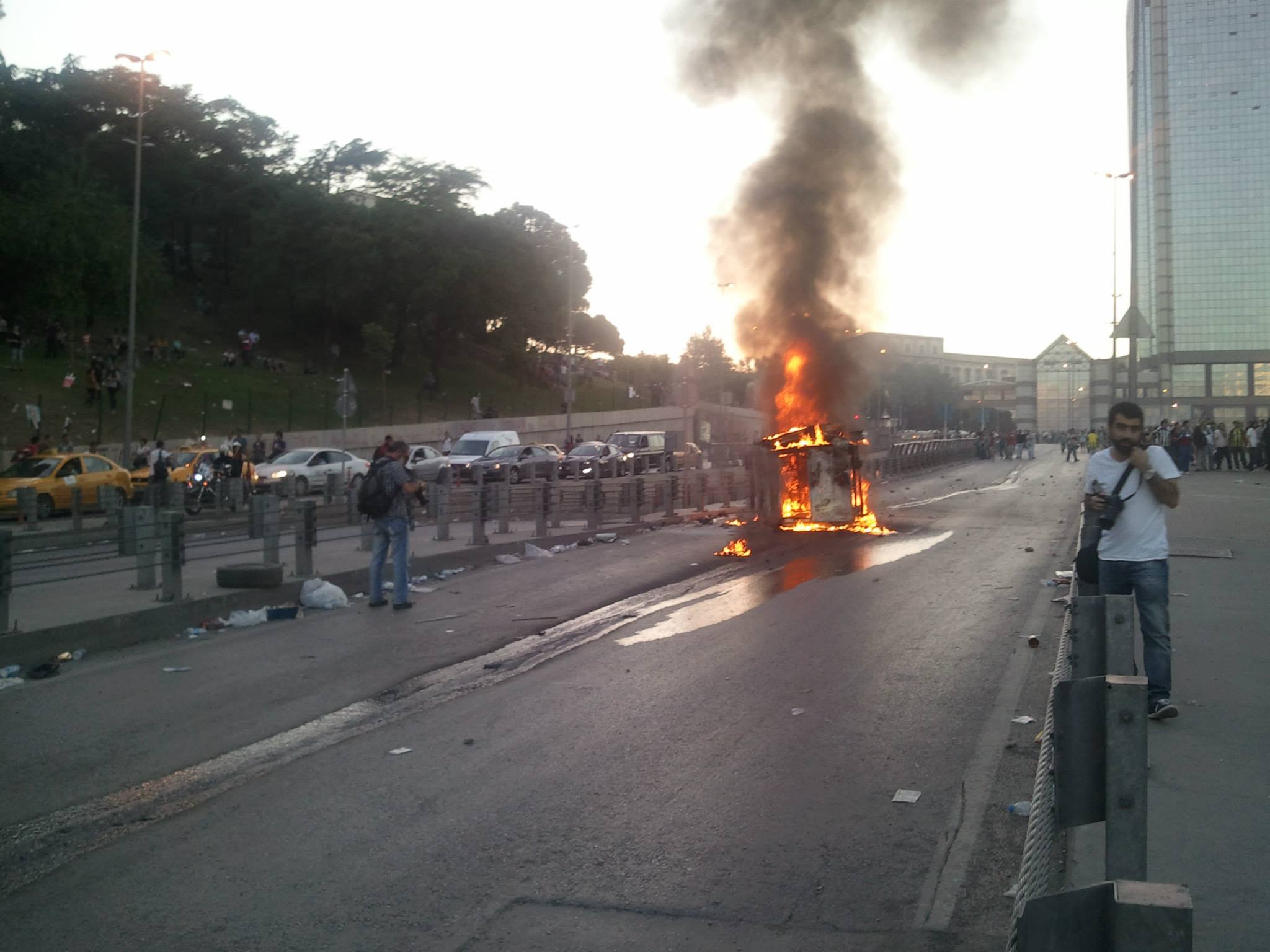
Emre has his two month evaluation today – if all goes well his future in the wine procurement business will be secure. I agree to meet him on Istiklal for dinner, drinks, and protest. There is not much of the latter, the boulevard an archipelago of quality cafes and bars in a sea of commerce. We smoke banana shisha while bands in adjacent venues compete for patrons – dancing spills out into the street. An irresistible aroma drifts through the square as cooks grill kofte (meatballs) for sandwiches. Beer is consumed openly while red sky lanterns ascend overhead. Some set up stands with shot glasses and tequila as the night wears on. There is no sign of police, no central authority. Turks lock arms and dance in circles of twenty or more. Merriment pervades –the angst the Gezi Park occupiers should entertain deferred for at least one more night.
Addendum
Gareth is no longer in Istanbul. He tells me that on Tuesday night, Erdogan’s riot police moved in to Taksim Square.
